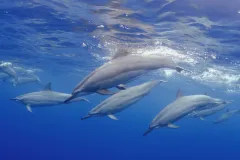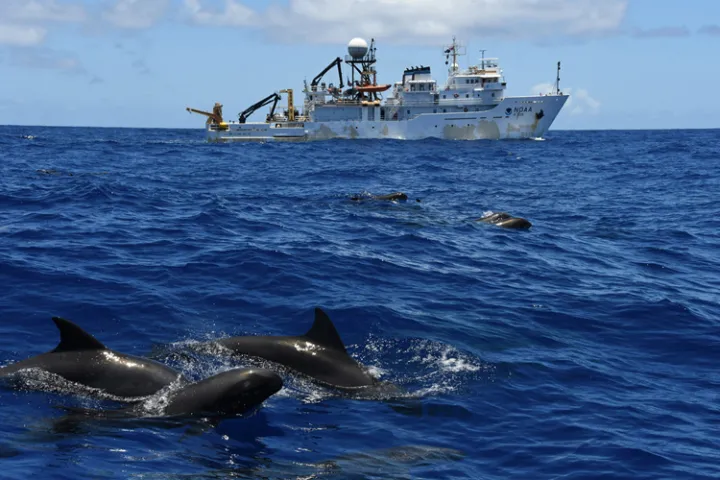Solidifying the Dolphin Family Tree

With their cartoon-smile faces and intelligent interactions, dolphins have become mascots for ocean conservation. The well-studied social behavior and communication of ocean dolphins have ushered us into their delightfully noisy world beneath the sea. Still, the internal family relationships of the more than 35 species of ocean dolphins have remained unresolved until recently.
We know that ocean dolphins, Family Delphinidae, are related to other “toothed whales,” a group of whales that hunt using echolocation. Most whales on Earth today are toothed whales, including not only those we typically call dolphins, but also killer whales, beaked whales, and sperm whales.
Various studies elaborated relationships of Delphinidae over the past few decades. Yet, some details of their family tree remained elusive. And, as more dolphin species are threatened by changes to ocean ecosystems, the urgency of sorting out their relationships rises. To prioritize saving species at risk, we must understand how related groups of dolphins are distributed on Earth. Smithsonian scientist Michael McGowen explains, “Knowing how these species are related to one another will better enable conservation to target specific ones.”
Until now, solidifying the dolphin family tree has been a logistical headache. Classic studies of body shape and features have outlined the general branches, but DNA analysis is required to confirm the placement of species on those branches. Modern genomic techniques can clarify relationships, provided you have tissue samples from each possible species. Ocean dolphins are distributed around the world in tropical, temperate, and even polar waters, and are protected by laws like the Marine Mammal Protection Act, making the task of collecting tissue samples daunting.
Mapping the family tree is also hindered by the slow evolutionary rates of dolphins. With long lifespans and small numbers of offspring, dolphins simply don’t evolve as fast as, say, mice or cockroaches. Compounding the challenge is the fact that ocean dolphins diversified quickly in geologic time, kicking off about 12 million years ago. The resulting subtle genetic differences between dolphin species can only be teased out with large samples of DNA. Large samples of DNA make for massive data sets, which mean lots of analysis time.
Still, Michael McGowen, with colleagues in the U.S., U.K., and Australia, recently cracked the code of ocean dolphin family relationships. They analyzed more than 3,000 genes and looked at 6.5 million DNA base pairs in dolphin tissue samples obtained from national repositories around the world. Once they had made family trees based on the genetic data, they used dolphin fossils to establish a timeline and figure out when species split off onto their own branches. Their process is not unlike when you send a saliva sample to a genealogy site and end up with your own family tree (although your tree represents individual relationships within just one species—Homo sapiens).
McGowen’s results not only validated previous family tree proposals for ocean dolphins (typically based on just a few genes), but also surfaced some interesting surprises. It turns out that orcas branched off early from other dolphin species, as far back as 10 million years ago. Meaning they are less related to other ocean dolphins than previously thought. In another shakeup, their data related the long-beaked dolphin in the Indian Ocean more closely to what is classified as the short-beaked dolphin in the UK than to the long-beaked dolphin off the California coast.
McGowen and colleagues have succeeded in creating a “precise species-level time tree” that provides a look back at the evolution of ocean dolphins. The dolphin family tree may even shed light on long-standing questions about the evolution of whales from terrestrial ancestors. As they evolved from hooved land animals, dolphin bodies transformed dramatically—flippers developed, nostrils repositioned, and underwater hearing came about. With the family tree in hand, McGowen and his colleagues look forward to taking another hard look at the body features of ocean dolphins, expecting to make sense of them in new ways.


